|
#2
5th October 2014, 03:44 PM
| |||
| |||
| Re: IIST Entrance Exam Question Papers
Here I am mentioning a few questions of the IIST entrance exam which I have extracted from a PDF file that you can download for free: 1. A projectile is fired at an angle 60◦ with some velocity u. If the angle is changed infinitesimally, let the corresponding fractional changes in the range and the time of flight be x and y, respectively, Then y is (A) 2 3x (B) −2 3x (C) 2x (D) −2x 2. A ball is dropped down vertically from a tall building. After falling a height h it bounces elastically from a table inclined at an angle θ and hits a wall at a distance d from the point of earlier impact horizontally, then (A) θ = (1/2) sin−1(2d/h) (B) θ = (1/2) tan−1(d/h) (C) θ = (1/4) sin−1(d/h) (D) θ = (1/2) tan−1(2d/h) 3. A photon with an initial frequency 1011Hz scatters off an electron at rest. Its final frequency is 0.9×1011 Hz. The speed of the scattered electron is close to (h = 6.63×10−34 Js, me = 9.1×10−31 kg) (A) 4 × 103 ms−1 (B) 3 × 102 ms−1 (C) 2 × 106 ms−1 (D) 30ms−1 4. Suppose the particle starts from r = 1 with a kinetic energy just enough to reach r = R. Its kinetic energy at r = R/2 will be (A) k/R (B) (5/8)(k/R) (C) (3/8)(k/R) (D) 0 5. Let a particle have an instantaneous position ~r(t), velocity ~v(t) and acceleration ~a(t). Necessary conditions for it to be considered as an instantaneous circular motion about the origin are (A) ~r.~v = 0 ; ~a.~v = 0 ; ~a.~r < 0 (B) ~r.~v = 0 ; ~a.~v = 0 ; ~a.~r > 0 (C) ~r.~v > 0 ; ~a.~v = 0 ; ~a.~r = 0 (D) ~r.~v = 0 ; ~a.~v > 0 ; ~a.~r < 0 6. A current I is flowing in a wire of length l. The total momentum carried by the charge carrier of mass m and charge q is (A) m q I l (B) 2m q I l (C) q m I l (D) 2q m I l 7. In an oil drop experiment, charged oil drops of mass m and charge q are released at a height h, one at a time, at intervals t > p2h/g. The drops are collected in a large metal sphere of radius R with a small opening at the top. The total number of drops that are able to enter the sphere will be (A) mg 4 π ǫ0 (h−R) q2 (B) mg 4 π ǫ0 (h−R)2 q2 (C) mg 4 π ǫ0 (h−R) q (D) mg 4 π ǫ0 (h−R)q 8. Two lenses, one biconvex of focal length f1 and another biconcave of focal length f2 are placed along the same axis. They are separated by a certain distance such that a parallel beam of light incident on the convex lens also emerges parallel from the concave lens subsequently. The magnification of the combination is given by (A) M = f1 2/f2 2 (B) M = f2/f1 (C) M = f1/f2 (D) M = (f1f2)/(f1 2 + f2 2) 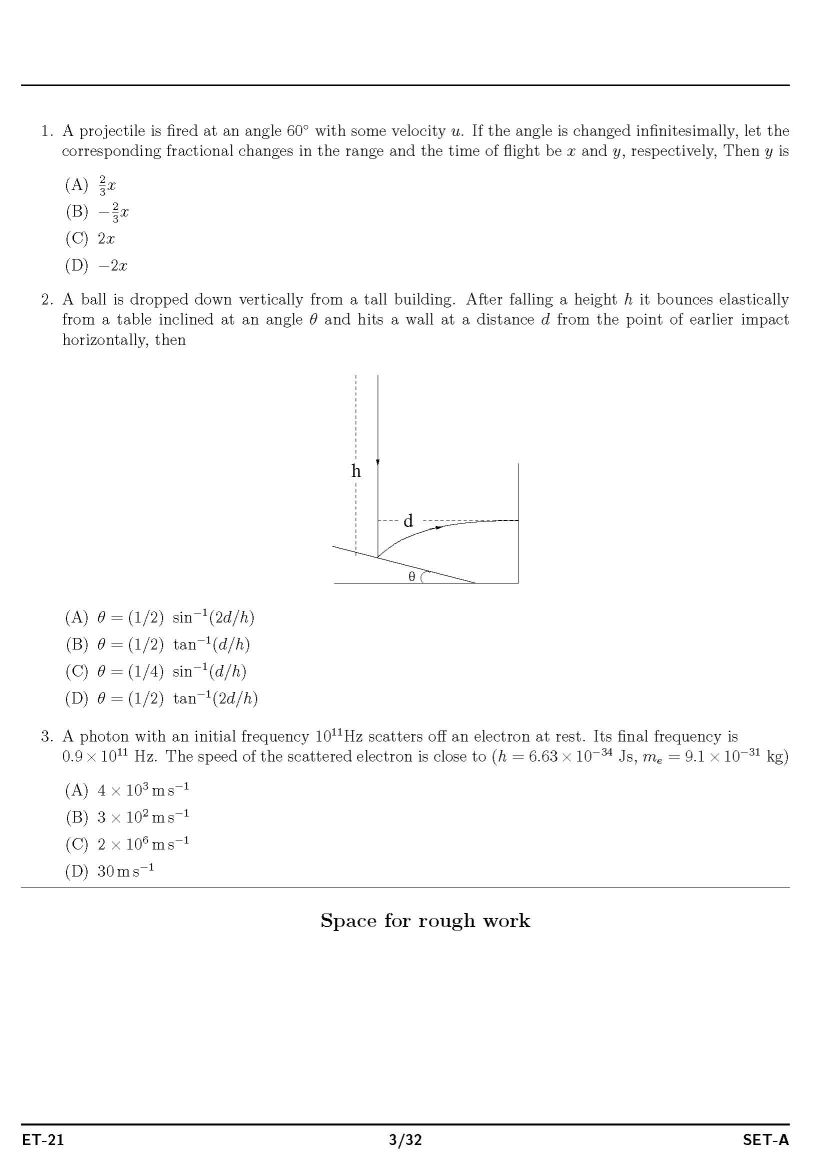 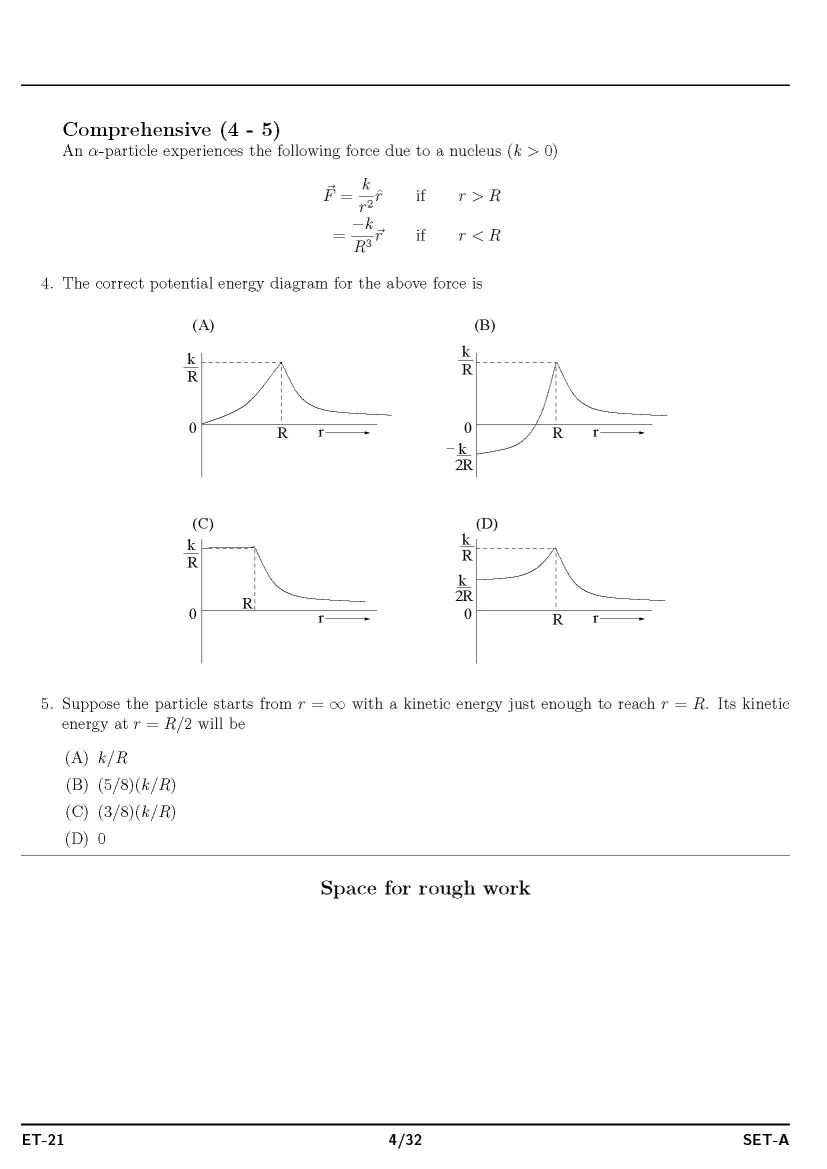 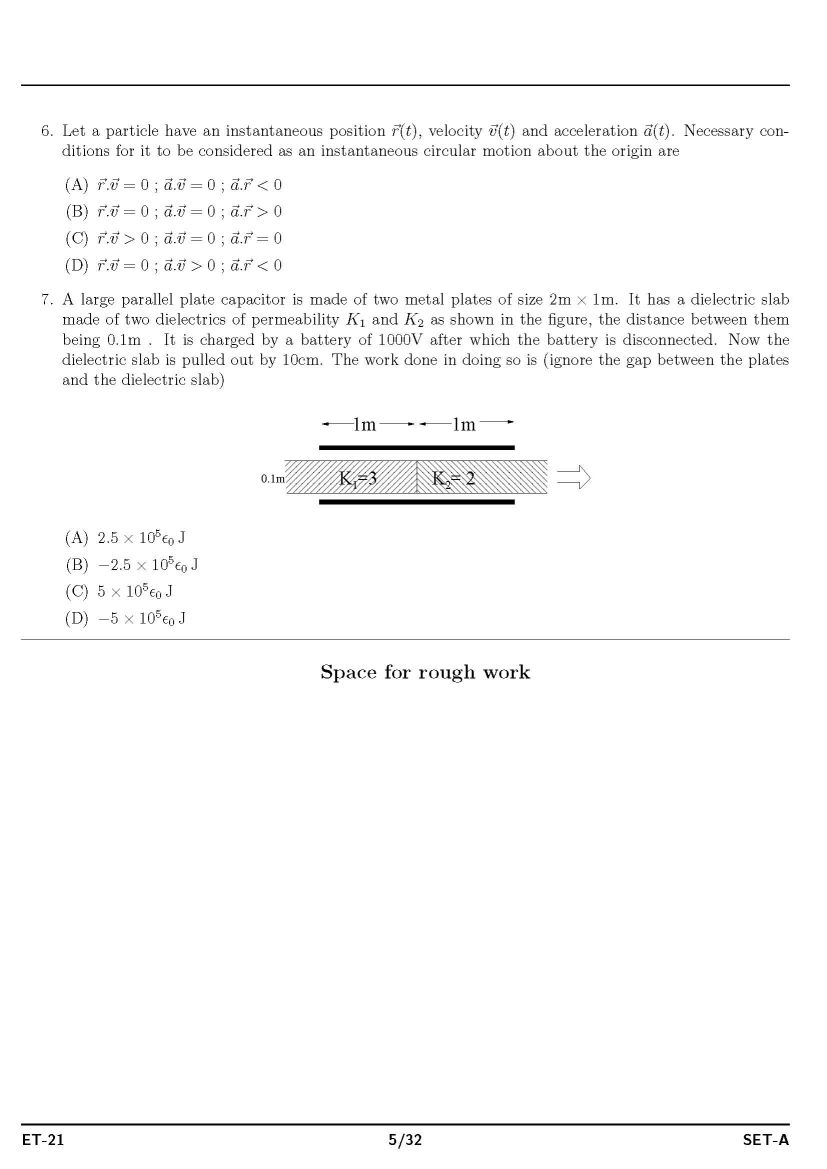 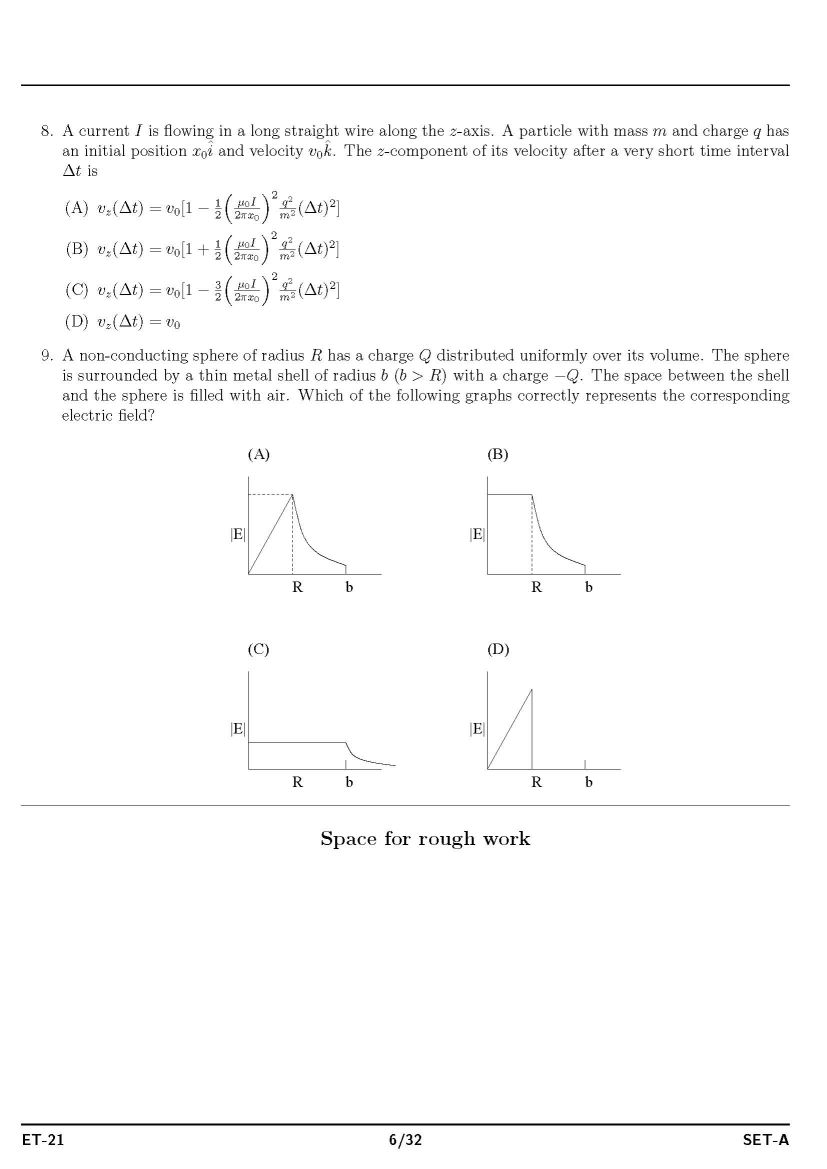 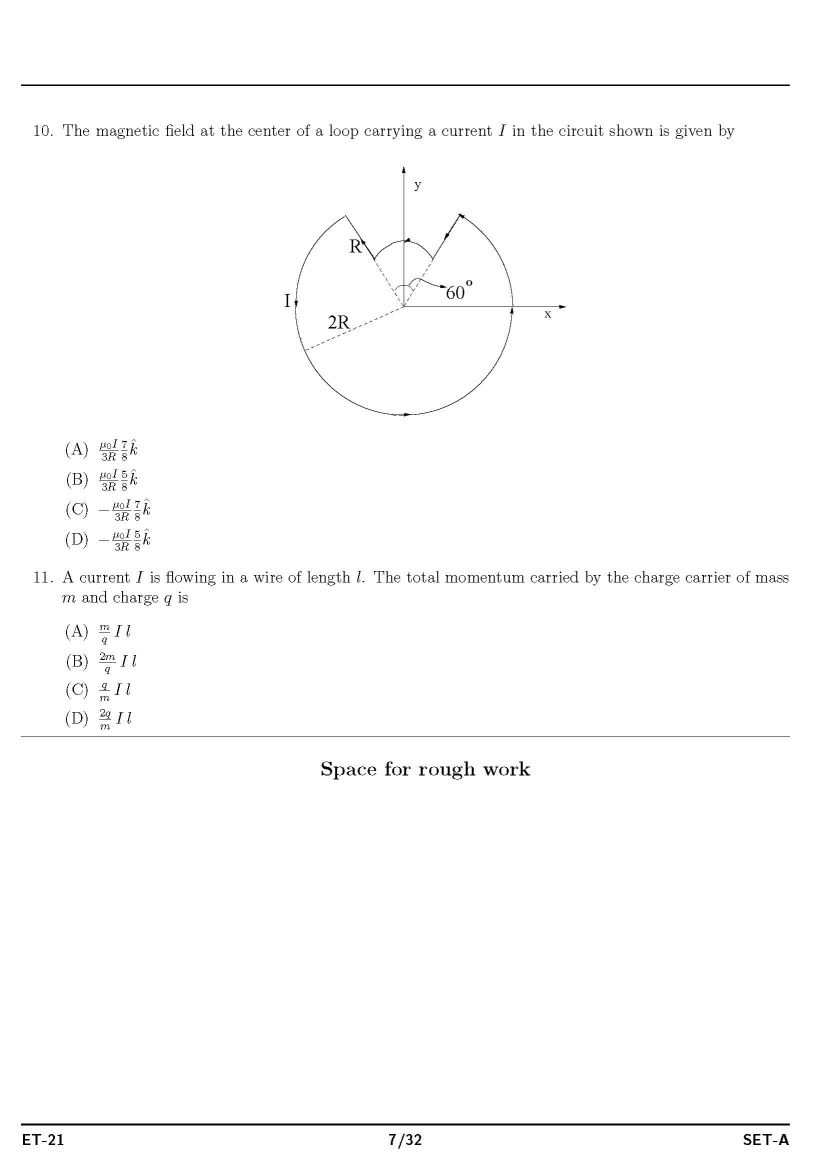 |